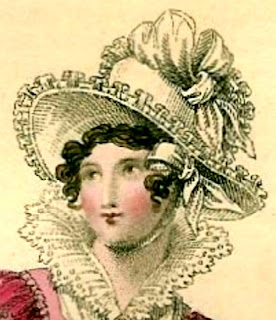Eeek! I totally forgot it was Tuesday, I have been frantically trying to finish up these revisions to turn in before I leave on vacation next week. So I am taking a cue from Carolyn and revisting an oldie post–from June 28, 2008…..

I admit it, I had no idea what to write about today. It is summer, after all. I’ve been spending time dangling my feet in the kiddie pool I bought for my dogs, drinking lots of iced tea and writing, writing, writing! Reading, reading, reading! But what Janet said on Thursday was right–we Riskies do seem to love anniversaries. So, I did a search to see what was going on in the world a hundred or so years ago.
This is what I found: On this day in 1859, the first official dog show in the UK was held in Newcastle. The only breeds shown that day were Pointers and Setters. A show later in the year, in Birmingham, added Spaniels to the mix, and in 1860 hounds were added (thus paving the way for this year’s Westiminster winner, Uno the beagle). The first London dog show was in 1860, in Chelsea, with the official Kennel Club founded in 1873. (The Victorians did love their show dogs!).
 I have 2 dogs of my own, a very bossy miniature Poodle mix (who loves to swim in her kiddie pool and bark a lot) and a much more laid-back Pug (that’s her in the pic!). Pugs were quite popular in the Georgian/Regency period, but their history goes much further back, to the Chinese Han and Tang Dynasty around 150 BC. Their path to Europe isn’t certain, but the earliest reference to them there comes around 1572, when a heroic little Pug woke his master, William of Orange, just in time to save him from Spanish raiders. In 1713, there was a portrait titled “Louis XIV and His Heirs,” with the appearance of a little fawn Pug (not named, and presumably not one of the heirs!)
I have 2 dogs of my own, a very bossy miniature Poodle mix (who loves to swim in her kiddie pool and bark a lot) and a much more laid-back Pug (that’s her in the pic!). Pugs were quite popular in the Georgian/Regency period, but their history goes much further back, to the Chinese Han and Tang Dynasty around 150 BC. Their path to Europe isn’t certain, but the earliest reference to them there comes around 1572, when a heroic little Pug woke his master, William of Orange, just in time to save him from Spanish raiders. In 1713, there was a portrait titled “Louis XIV and His Heirs,” with the appearance of a little fawn Pug (not named, and presumably not one of the heirs!)
 English artist William Hogarth owned a series of Pugs and often painted them, especially his favorite “Trump.” In 1740, the sculptor Roubiliac modeled terracotta statues of Hogarth and Trump, which were later produced in porcelain by the Chelsea pottery factory.
English artist William Hogarth owned a series of Pugs and often painted them, especially his favorite “Trump.” In 1740, the sculptor Roubiliac modeled terracotta statues of Hogarth and Trump, which were later produced in porcelain by the Chelsea pottery factory.
Many famous historical figures have been owned by Pugs. Madame de Pompadour, Marie Antoinette, George III and Queen Charlotte, Empress Josephine, Voltaire, George Eliot, the Duke and Duchess of Windsor, Princess Grace, and Queen Victoria. Some of her Pugs included Venus, Olga, Fatima, Pedro, and Bosco (who has his own monument at Frogmore). My own dog is named Victoria in her honor.
 And speaking of Queen Victoria, this is also the anniversary of her coronation! This happened in 1838. It is also the anniversary of Catherine the Great of Russia’s seizure of power from her crazy husband, in 1762. She might have owned Pugs, but I’m not sure. If not, she should have.
And speaking of Queen Victoria, this is also the anniversary of her coronation! This happened in 1838. It is also the anniversary of Catherine the Great of Russia’s seizure of power from her crazy husband, in 1762. She might have owned Pugs, but I’m not sure. If not, she should have.
Do you have dogs (or pets of any sort?) Are they enjoying their summer?







